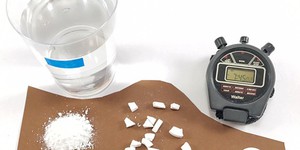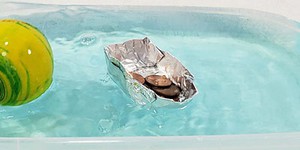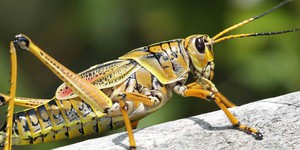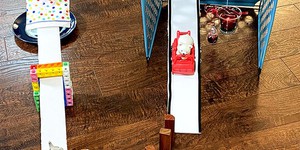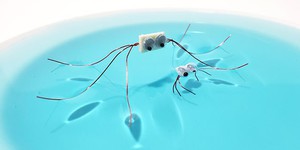Lesson Plans (252 results)
|
Select a resource
Sort by
|
Lesson Plan
Grade: 9th-12th
4 reviews
How does surface area affect the speed of a chemical reaction? Let your students find out in this sizzling lesson plan! In this project, they will explore this correlation by crushing Alka-Seltzer® tablets into different sized particles and measuring how long it takes for them to dissolve in water.
Read more
NGSS Performance Expectations:
Lesson Plan
Grade: 3rd-5th
4 reviews
There are many different ways to make slime. In this lesson plan, your students will use the engineering design process to design their own slime product. They will need to decide on the desired properties for their slime and then experiment to find the best recipe.
Read more
NGSS Performance Expectations:
Lesson Plan
Grade: 6th-8th
4 reviews
People have used boats to transport things around the world for thousands of years. Unfortunately, those boats can be vulnerable to stormy seas and they can capsize. This lesson expands on the classic "aluminum foil boat" project. Normally, students would build a boat from a sheet of aluminum foil and see how much weight it can hold—in still water—before sinking. In this project, they will find out how well their boats hold up to waves!
Read more
NGSS Performance Expectations:
Lesson Plan
Grade: 6th-12th
9 reviews
This lesson plan will introduce your students to physical computing: the process of building circuits and programming a microcontroller (an Arduino UNO®) to interact with them. The lesson is broken into seven activities that will walk your students through the basics of setting up the Arduino and interacting with circuit parts like LEDs, buttons, and resistors. This introductory material will help prepare your students for more advanced Arduino projects.
Read more
Lesson Plan
Grade: 2nd-5th
8 reviews
There are thousands of species of insects in our world, and each are adapted to survive in their habitat. In this activity, students will learn what an insect is and what some of their adaptations are. Then they will put their knowledge into play by "creating" an insect that is adapted to live in their assigned environment.
Read more
Lesson Plan
Grade: Kindergarten-5th
3 reviews
In this fun engineering lesson plan, your students will build a rocket-catching device to help a falling rocket land vertically without crashing, using simple and readily-available materials.
Middle school
and
high school
versions of this lesson plan are also available. This lesson was part of the 2025 Science Buddies Engineering Challenge.
Read more
NGSS Performance Expectations:
Lesson Plan
Grade: 6th-8th
2 reviews
Rube Goldberg machines—machines that complete a simple task in a convoluted way—are intriguing, artistic, and fun! In this lesson, students will design and build such a machine themselves and use the concept of kinetic energy in the process. Before students start designing, they will do an experiment that explores how kinetic energy depends on the mass and the speed of the moving object. With a clear understanding of this concept, students then tackle the engineering design…
Read more
NGSS Performance Expectations:
Lesson Plan
Grade: 3rd
How do water striders skip across the surface of the water? What advantage does this give them over other insects that helps them survive in their environment? Your students will find out in this lesson as they build their own insects from pieces of wire, and see which ones sink and which ones float.
Read more
NGSS Performance Expectations:
Lesson Plan
Grade: 2nd
6 reviews
Your students might know that plants need water to survive. But how does a plant "drink" and get water from the soil all the way up to its' leaves? In this lesson plan, students will observe how plants (flowers and celery) suck up dye-stained water, which makes the petals and leaves change color! This allows students to visualize the process of how water moves through a plant.
Read more
NGSS Performance Expectations:
Lesson Plan
Grade: Kindergarten
30 reviews
At some point, many children wish for a pet animal to play with and care for. But what does it take to keep an animal alive and healthy? In this engaging lesson plan, children will act out adopting a pet and shopping for items based on its needs. As they bring their items together, they will notice that every animal needs food, water, shelter, and air to survive.
Read more
NGSS Performance Expectations:
|

